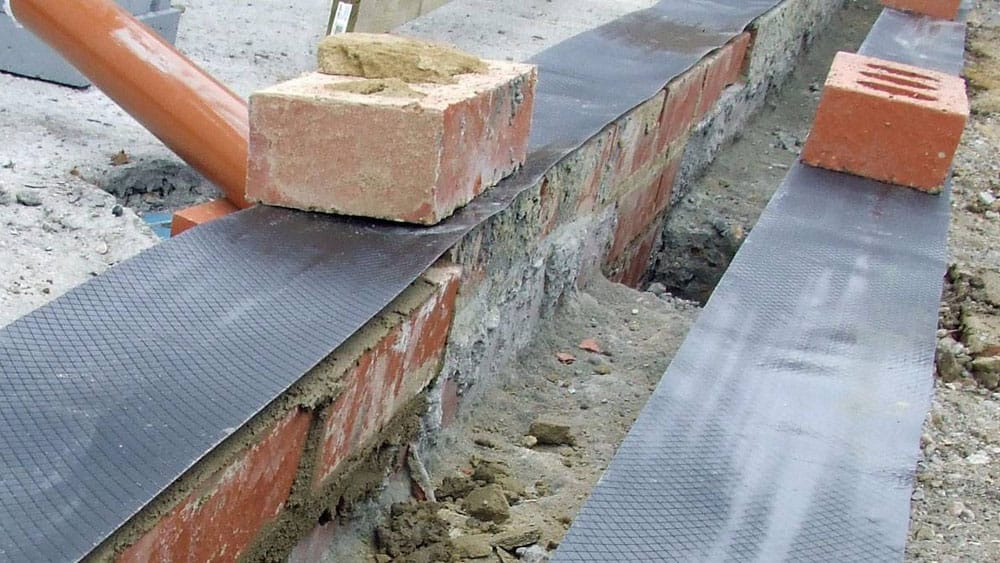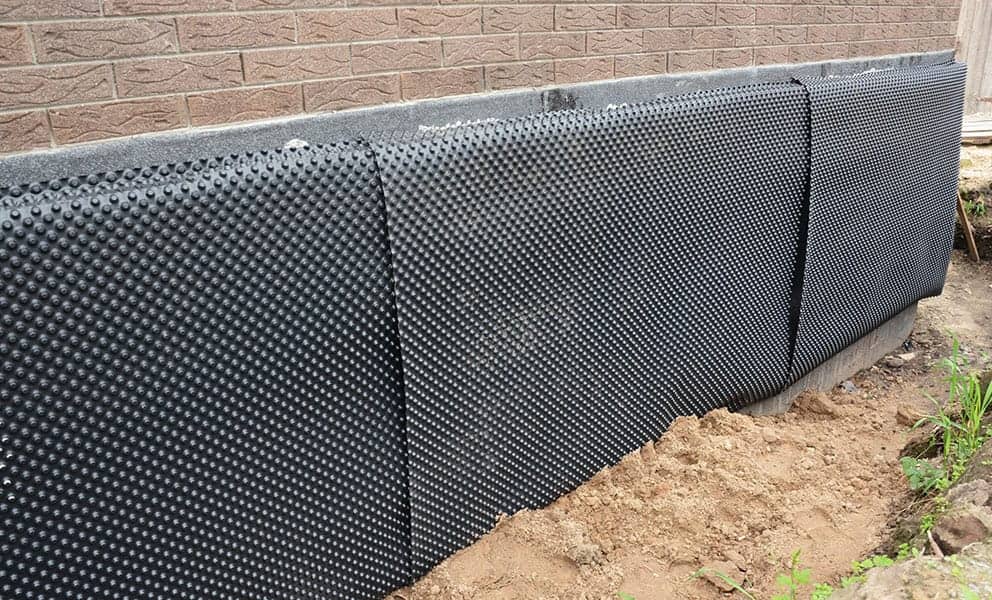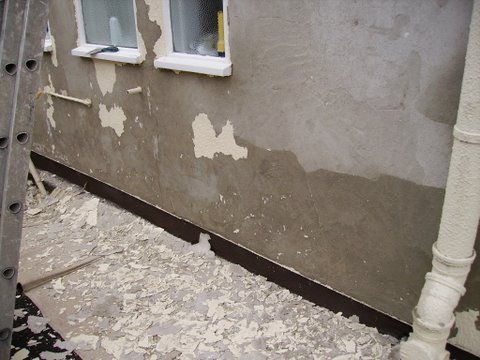Why investing in hiring a mould treatment newcastle professional
Why investing in hiring a mould treatment newcastle professional
Blog Article
Exploring the Numerous Techniques and Solutions for Effective Damp Proofing
Wetness in structures positions significant obstacles to both architectural integrity and interior air high quality. Different techniques and options have arised to battle this pervasive problem. From typical damp-proof membrane layers to cutting-edge chemical treatments, each approach supplies one-of-a-kind advantages. Recognizing these options is vital for reliable moisture control. Nonetheless, choosing the ideal remedy relies on details structure problems and needs, motivating further exploration into one of the most efficient wet proofing strategies readily available.
Comprehending the Causes of Wetness
Although wetness can emerge from numerous sources, understanding these reasons is crucial for efficient removal. Frequently, wetness stems from 3 key sources: increasing wet, permeating wet, and condensation. Climbing damp occurs when groundwater travels up-wards with porous products, such as block or stone, often as a result of an absence of an efficient barrier (damp specialist newcastle). Passing through wet is normally brought on by exterior factors, consisting of roof leaks, faulty seamless gutters, or damaged wall surfaces, permitting water to penetrate a residential or commercial property. Condensation, on the other hand, results from excess dampness in the air, usually intensified by inadequate ventilation and temperature level differences, causing water droplets basing on surface areas. Determining these underlying issues is vital, as each sort of dampness calls for a customized method for remediation. Proper assessment aids in determining the most effective remedies, ultimately protecting the architectural integrity of a structure and boosting indoor air high quality
Standard Damp-Proof Membrane Layers

Chemical Damp-Proofing Solutions
Chemical damp-proofing options supply an ingenious method to stop moisture invasion in buildings. These approaches generally include the application of fluid chemicals that permeate stonework and create an obstacle against increasing damp. Generally made use of chemicals include silanes, siloxanes, and various other water-repellent agents that respond with surface materials to develop a hydrophobic layer.The application process usually requires drilling holes right into the walls, infusing the chemical option, and permitting it to heal. This approach is especially advantageous for older frameworks where conventional damp-proof membranes might be impractical. Chemical damp-proofing can be less turbulent and more cost-efficient than comprehensive renovation projects.While effective, these solutions depend on proper application and environmental conditions for peak efficiency. damp removal newcastle. Regular maintenance and tracking are important to ensure the long life of the damp-proofing therapy. Generally, chemical damp-proofing stands for a versatile option for securing buildings versus moisture-related damage
Tooth Cavity Wall Construction Techniques
Cavity wall surface building strategies provide many advantages, specifically in wetness control and power effectiveness. By integrating an air space in between two layers of masonry, these wall surfaces properly mitigate water access while improving insulation. This mix not just safeguards frameworks from dampness but likewise adds to decreased energy consumption.
Benefits of Tooth Cavity Walls
When taking into consideration effective damp proofing techniques, the advantages of dental caries wall surfaces stand apart plainly. Dental caries walls contain two different layers, developing an air space that successfully minimizes dampness penetration. This style reduces the threat of wetness, as the external wall acts as a barrier against rainfall and water ingress. Furthermore, dental caries wall surfaces boost thermal insulation, which contributes to power performance by lowering warm loss. They likewise provide audio insulation, aiding to produce a quieter interior environment. Furthermore, the air void enables ventilation, which aids in moisture control and minimizes the chance of mold and mildew development. These benefits not just boost the overall comfort of a building but additionally add to its long life and architectural stability.
Wetness Control Techniques
Efficient wetness control approaches are essential in tooth cavity wall building and construction to assure long-term security against moisture. One main method involves the consolidation of weep holes, which facilitate water drainage from the tooth cavity, avoiding accumulation. Furthermore, the usage of breathable membrane layers can assist manage moisture degrees while allowing trapped vapor to run away. Appropriate placement of insulation is also crucial, as it should not block drain paths. In addition, making certain that the external fallen leaves of the dental caries wall surface are built with waterproof products enhances general resilience. Regular upkeep checks are vital to recognize any kind of obstructions or damage early, protecting the structure's stability. Ultimately, a mix of these techniques develops a durable protection against dampness intrusion in dental caries walls.
Insulation and Power Effectiveness
Insulation plays a crucial duty in improving energy efficiency within tooth cavity wall surface construction. By incorporating protecting products, these walls produce a thermal obstacle that decreases warmth loss and minimizes energy intake. Reliable insulation not only helps maintain a secure interior temperature level yet also minimizes the risk of dampness, as it protects against condensation within the wall tooth cavity. Numerous techniques, such as using rigid foam boards or mineral wool, can be utilized to accomplish ideal insulation efficiency. Additionally, correct installment is vital to assure that spaces and gaps are reduced, which can or else endanger energy performance. Inevitably, a well-insulated tooth cavity wall surface contributes considerably to overall sustainability and decreases cooling and heating prices for homeowners.
Exterior Damp Proofing Approaches
Outside moist proofing methods are necessary for securing frameworks from wetness infiltration. Two efficient methods include the application of waterproof membranes and the installment of French drains. These remedies help alleviate water accumulation and maintain the honesty of structures.
Waterproof Membrane Layer Application
While various methods exist for preventing wetness access, the application of waterproof membrane layers continues to be an extremely reliable outside damp proofing method. These membranes are usually made from products such as polyethylene, rubber, or modified bitumen, giving a robust obstacle against water infiltration. The installation procedure includes using the membrane layer to the external surfaces of structures or wall surfaces, guaranteeing complete coverage to stop leakages. Correct adhesion and sealing at joints are crucial to making best use of performance. Water resistant membranes can be applied in numerous kinds, consisting of liquid finishes and sheet membranes, permitting for adaptability based on the specific demands of the framework. This method not only shields buildings from wetness but additionally improves their long life and structural stability.
French Drain Installment
One reliable approach for taking care of groundwater and preventing moisture buildup around a building's structure is the installation of a French drainpipe. This drainage system is composed of a trench loaded with gravel and a perforated pipe that reroutes surface area water far from the structure. Correct setup needs cautious planning, making certain that the drain inclines far from the framework to facilitate perfect water flow. Additionally, the location of the drainpipe is crucial; it must be positioned in areas vulnerable to pooling or excess moisture. Regular maintenance, consisting of clearing debris from the gravel and guaranteeing the pipeline stays unobstructed, is crucial for lasting effectiveness. Eventually, a well-installed French drainpipe can substantially lower the danger of water-related concerns in foundations and basements.
Interior Waterproofing Strategies
Interior waterproofing strategies are essential for securing a structure's interior from dampness infiltration and prospective water damages. These approaches usually include the application of customized materials and methods developed to produce a moisture obstacle within the structure. One typical technique is making use of water-proof layers or sealers on walls and floorings, which protect against dampness from permeating surfaces.Additionally, mounting indoor drain systems, such as sump pumps, can efficiently take care of water buildup in basements and creep rooms. An additional approach includes the usage of vapor obstacles, which are mounted to hinder moisture movement from the ground right into living spaces.Moreover, addressing any kind of fractures or voids in wall surfaces or structures with proper sealants assures a comprehensive protection against water breach. By applying these indoor waterproofing strategies, home owners can greatly minimize the danger of mold growth, structural damages, and other moisture-related problems. Proper implementation of these techniques is essential for long-term defense and structure stability.
Regular Maintenance and Evaluation Practices
Normal upkeep and assessment practices are vital for ensuring the long-term effectiveness of wet proofing remedies in any structure. Routine checks allow building proprietors to recognize early indications of dampness intrusion, such as peeling paint, mold and mildew growth, and mildewy odors. These indications can indicate underlying issues that need immediate attention.Inspections must be performed at least each year, concentrating on at risk locations like cellars, creep rooms, and outside wall surfaces. During these assessments, home proprietors need to examine sealants, drainage systems, and ventilation to verify they function correctly.Additionally, preserving seamless gutters and downspouts is crucial, as stopped up systems can lead to water buildup near the structure. Implementing a normal upkeep routine, in addition to timely repair services, can significantly expand the life expectancy of wet proofing measures and secure the architectural honesty of the structure. Aggressive steps ultimately add to the overall health and safety and security of the living setting.
Frequently Asked Inquiries
How Much Time Does Damp Proofing Typically Last?
The period of moist proofing effectiveness differs, usually lasting between 20 to half a century. Factors such as application top quality, environmental conditions, and maintenance practices greatly influence the long life of the wet proofing therapy.

Can I Damp Evidence My Home Myself?
The specific pondered the usefulness of DIY damp proofing. With correct research and the appropriate products, it is feasible. Nevertheless, they additionally identified the relevance of expert advice to ensure resilient effectiveness and stop future issues.
What Are the Signs of Ineffective Damp Proofing?
Signs of inadequate moist proofing include relentless moldy odors, visible mold and mildew growth, peeling paint, damp patches on wall surfaces, and wood decay - damp removal newcastle. Home owners must deal with these concerns quickly to protect against more damage and wellness problems
Does Damp Proofing Affect Indoor Air Top Quality?

Exactly How Much Does Expert Damp Proofing Expense?
Specialist wet proofing expenses differ considerably, commonly varying from $1,000 to $5,000 depending upon the home's size, the level of the moist issue, and picked techniques. Each scenario calls for a customized analysis for precise prices. Frequently, moisture stems from three key sources: rising damp, penetrating moist, and condensation. When considering reliable damp proofing techniques, the benefits of tooth cavity wall here surfaces stand out plainly. Exterior wet proofing techniques are important for securing frameworks from dampness seepage. While numerous techniques exist for preventing moisture access, the application of water resistant membranes remains a highly effective external wet proofing method. Signs of ineffective moist proofing include relentless musty odors, visible mold growth, peeling off paint, damp spots on walls, and wood decay.
Report this page